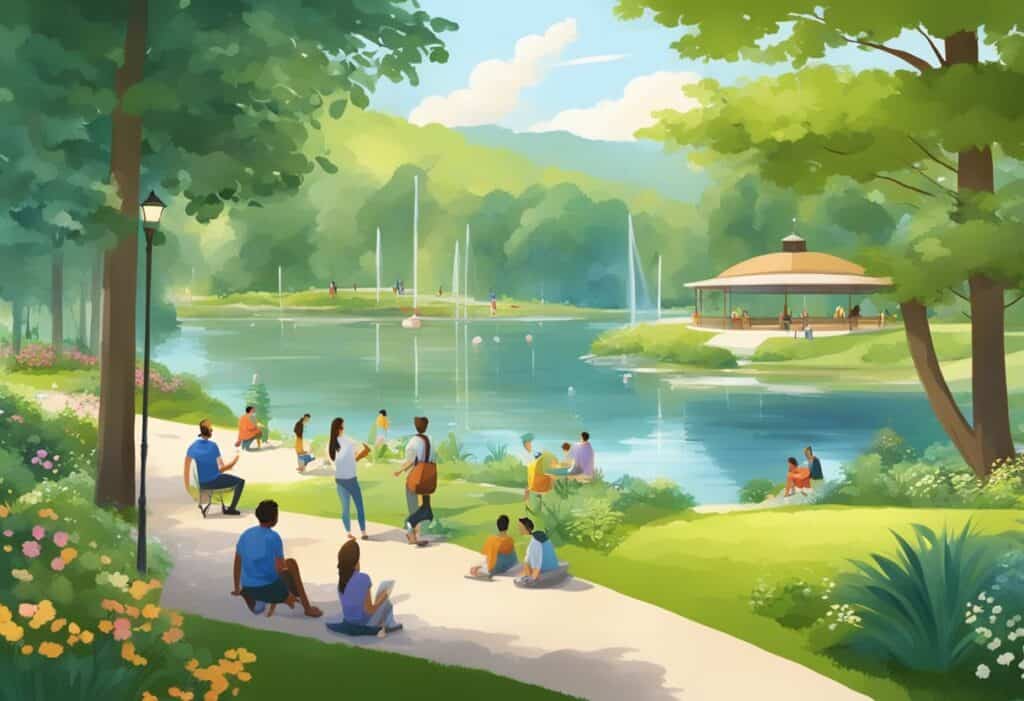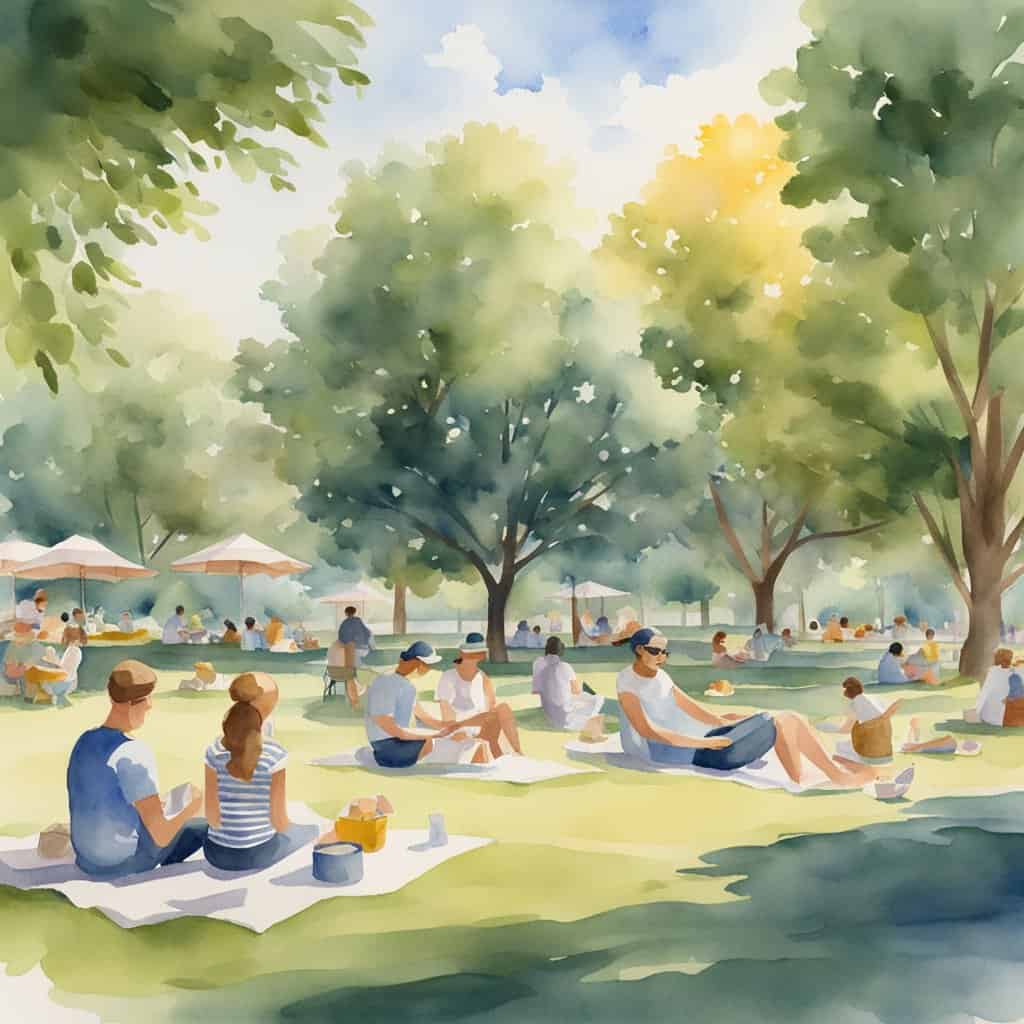Leisure archetypes refer to the patterns of behaviour and preference that characterize how individuals engage in leisure activities. These leisure archetypes help us understand the psychological dimensions underpinning leisure choices and the influence of cultural and societal norms.
Understanding Leisure Archetypes
Understanding leisure archetypes involves examining the intrinsic and extrinsic motivations that drive people toward certain activities. It also encompasses the emergent trends in leisure consumption, particularly in the digital age.
Over time, the leisure world has had significant cultural and societal changes. In ancient times, leisure was primarily enjoyed by the rich and privileged. However, as time passed, more and more people gained access to leisure activities.
During the Industrial Revolution, leisure became more structured and commodified due to longer working hours and the introduction of paid vacations. Technological advancements have enabled us to experience many leisure activities, such as virtual reality gaming and globalized sports participation.
Our culture and traditions play a significant role in shaping the type of leisure activities we engage in. For instance, in Spain, it is common for people to take siestas or afternoon naps after a lengthy lunch, while in Japan, people enjoy hanami or flower viewing during springtime. Additionally, religious observances can lead to specific leisure activities, such as the Jewish Sabbath, emphasizing the importance of weekend rest and family time.

Major Leisure Archetypes
Leisure archetypes are generally grounded in two central theories: Jung’s Archetype Theory and the Leisure Motivation Scale.
Carl Jung proposed that archetypes represent universal patterns of human behaviour. When transferred to the leisure domain, these behaviours can categorize an individual’s preferred activities.
The Leisure Motivation Scale offers an empirical approach where leisure preferences are sorted based on four motivational dimensions: intellectual, social, competence-mastery, and stimulus-avoidance. Combining Jung’s theoretical constructs with empirical research, a nuanced framework that depicts a spectrum of leisure archetypes emerges.
The underlying psychological dimensions that shape leisure archetypes also vary when exploring them. These include the motivational factors driving leisure activities, the personality traits influencing leisure choices, and the relationship between leisure and emotional well-being.
The motivational factors are that we seek activities that provide inherent pleasure and satisfaction. We pursue leisure activities that allow us to improve and demonstrate our abilities. Additionally, we have social motivations like building connections, seeking new experiences and knowledge, and enhancing self-esteem.
Our leisure preferences can reveal a lot about our personalities. They can provide hints about our likes, dislikes, and what we value. For instance, extroverted individuals are outgoing and sociable and enjoy participating in group activities and social gatherings. These activities allow them to interact with others and thrive in social settings. In contrast, introverted individuals may prefer quieter and more solitary leisure activities like reading, watching movies, or hiking alone. Understanding our leisure preferences can help us identify our personality traits and make choices that align with our values and interests.
Leisure activities are also profoundly shaped by the cultural and societal contexts in which we live. For instance, societies with a standard five day work week often see increased weekend leisure activities. In countries strongly emphasizing work-life balance, weekend getaways and evening classes are popular.

Leisure Archetypes
Utilizing Jung’s theoretical framework, the leisure motivation scale, research has identified five distinct patterns of behaviour that people often exhibit during their leisure time. Each represents a unique approach to how individuals engage with their interests and environments.
The Adventurer: Adventurers are known for their love of the outdoors and find joy in exploring new destinations that offer them the chance to engage in extreme sports. These individuals are often characterized by their boldness and willingness to take risks to experience the thrills of adventure. They tend to be active and physically fit, with a strong desire to push themselves to their limits while enjoying the beauty and excitement of the natural world.
The Socializer: This personality type enjoys socializing and spending time with others. They enjoy attending social gatherings, community events, and meeting new people. A Socializer’s key characteristics are their high level of sociability and good networking skills. They know how to connect with people and build relationships effortlessly. Being around others energizes them, and they thrive in social situations. They are often the life of the party and can easily make new friends. Overall, the Socializer is a valuable community or social circle member, bringing joy and positivity wherever they go.
The Creator: A creator is a personality type motivated by the desire to create, innovate and express themselves through artistic or practical means. They enjoy their leisure time exploring their imagination, experimenting with new ideas, and producing something that reflects their unique perspective.
These individuals often have a natural talent for creating things with their hands or may be skilled in various art forms such as painting, writing, or music. They may also enjoy DIY projects or crafting, which allows them to use their creativity and imagination to build or design functional and aesthetically pleasing things.
One of the most essential qualities of a Creator is their ability to think outside the box and generate innovative ideas. They are fearless in taking risks and trying new things, even if it means failing a few times before getting it right. A deep passion for their craft drives them, and they strongly desire to create something unique and meaningful.

The Learner: Learners are individuals who are constantly striving to gain new knowledge and skills. They have a deep passion for learning and need to be content with their current level of expertise. They often spend their leisure time reading educational books and taking in-person or online courses and workshops to enhance their understanding of various subjects.
Pursuing knowledge is a top priority for learners, who are always excited to discover new information. Their love for learning and intellectual curiosity sets them apart from others. They are unsatisfied with surface-level knowledge and seek a deeper understanding of the world around them. Learners are committed to personal and professional growth and always look for new ways to expand their horizons.
The Relaxer: Relaxers are individuals who understand the importance of taking time for themselves to recharge. They tend to prioritize activities that help them achieve a state of calm and relaxation. Some activities that relaxers engage in include Tai Chi, yoga, meditation, leisure time in nature, or hobbies like gardening.
Relaxers tend to be mindful of their wellness and prioritize self-care. They understand that taking care of themselves allows them to better cope with the stresses of everyday life. Stress reduction is a top priority for relaxers, and they often seek out activities that help them achieve a sense of peace and tranquillity.

Leisure Archetypes And The Digital Age
As the digital age grows, leisure archetypes have evolved to include a variety of digital experiences. This is most prominent in the virtual landscapes and gaming environments that dominate online leisure.
Virtual worlds provide expansive environments where we can alter our identity, socialize, and engage with content transcending physical boundaries. New archetypes emerge in these digital communities: the explorer and the Socializer. Gaming and interactive media have introduced leisure archetypes shaped by the nature of the games we play and the content we interact with the Competitor and the Builder. Lastly, current societal changes, including shifts in demographics, interests and behaviours, signify the emergence of novel leisure archetypes: Health and Wellness Advocates and Eco-leisure participants.
- The Explorer: These users thrive on discovery, seeking out new virtual territories and experiences.
- The Socializer: They prefer interacting with others, forming connections and collaborating within digital spaces.
- The Competitor: Driven by achievement and competition, these individuals are motivated by leaderboards and in-game success.
- The Builder: Creative and resourceful, they are focused on constructing and shaping in-game worlds and structures.
- Health and Wellness Advocates: A rising interest in mental and physical well-being.
- Eco-Leisure Participants: A commitment to sustainability and nature-oriented activities.
Final Thoughts
Understanding leisure archetypes provides valuable insights into the diverse ways in which individuals engage with their free time. It’s not just about the activities but also the underlying motivations and fulfillment of these pursuits. Recognizing and embracing our leisure preferences can better align our activities with our intrinsic needs and values, leading to a more satisfying and balanced life.
Frequently Asked Questions
How does one identify their leisure archetype and its implications?
Identifying a personal leisure archetype involves introspection about one’s leisure choices and underlying motivations. We can discern our archetype by observing which activities we gravitate towards and what values they reflect, which can inform our understanding of self and guide future leisure decisions.
Can an individual identify with more than one leisure archetype?
Individuals can exhibit traits from multiple leisure archetypes and may engage in activities that reflect different aspects of their personality and motivations.
How can understanding leisure archetypes improve our quality of life?
By understanding our leisure archetypes, we can make personal choices about how to spend our leisure time. Engaging in activities that align with our archetypal preferences can lead to greater satisfaction, personal growth, and a sense of fulfillment, thus improving our overall quality of life.






